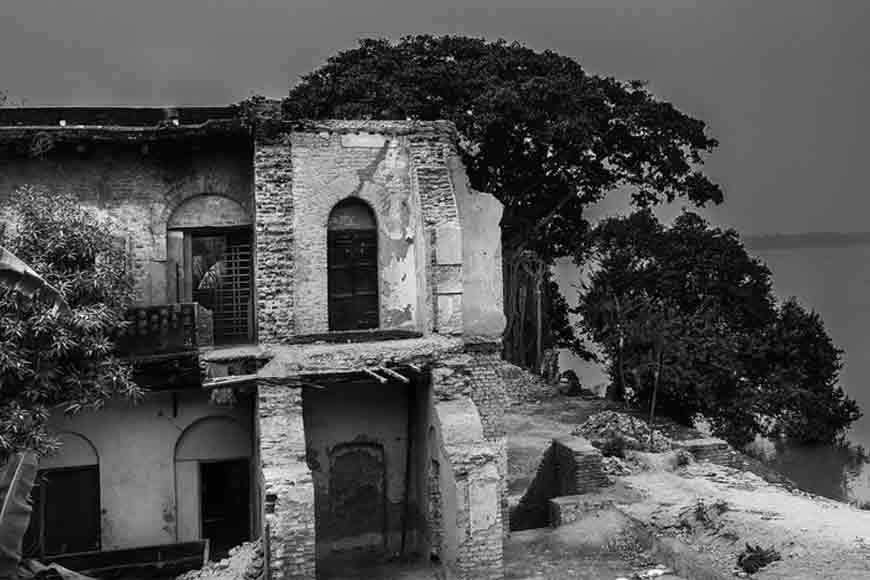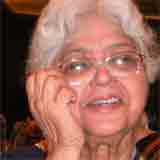Buffer zone between Ghotis and Bangals

Sunanda Bose is a social activist and has worked for decades on women education and rights. She also belongs to the erstwhile Taki Zamindar family
In the twelfth century, King Ballal Sen of Bengal invited five Brahmins from Kanauj. Each of them was accompanied by a Kayastha working under him.They were the fore fathers of Bengal’s Brahmins and Kayasthas. I shall confine myself only to the latter who were Bose,Ghosh, Mitra, Guha and Dutta. Out of these five Kayasthas the first four were granted Kulin Status by the King but Dutta best known for reasons of bygone days although acknowledged as a high caste Kayastha was not awarded the Kulin status.
Bengal was at that time geographically divided into two parts: Eastern region consisting of erstwhile East Bengal and present Bangladesh was known as SAMATAT, while the remaining part was known as RARH ANCHAL which again was subdivided into DAKSHIN RARH and UTTAR RARH. Out of the high caste and kulin kayasthas the Bose,Ghosh and Duttas spread themselves over both Rarh Anchal and Samatat. Mitras concentrated mainly on the Rar hAnchal whereas the Guhas concentrated in Samatat. The Kayasthas settled in Dakshin Rarh came to be known as Dakshin Rarhis and those settled in Samatat came to be known as Bangaj Kayasthas. With time the former named the latter Bangals and the latter named the former Ghatis. There were hilarious accounts of Ghati-Bangal feuds in our childhood.

The small town of Taki in Basirhat of North 24 Parganas is the seat of a Buffer Zone between the two communities. The Guha Roy Chowdhury family of zamindars, migrated to Taki from Jessore nearly four hundred years ago. They are the direct descendants of Birat Guha,the first Guha to arrive in Ballal Sen’s court from Kanauj. Their lineage can be traced back directly to Kachu Ray son of Raja Basanta Ray, paternal uncle of Raja Pratapaditya,legendary King of Jessore and one of the most prominent Baro Bhuniyas. The first gentleman to migrate to Taki from Jessore was most probably Durlabh Chandra(Guha) Majumdar and his son.Soon Taki became a thriving place and came to be known as a land of the Guha Zamindars who acquired the title of Roy Chowdhury from the Muslim rulers.
The principal Guha Roy Chowdhury family who were acknowledged as the Zamindars of Taki thrived under the British and amassed huge wealth and property. About two hundred and fifty years back the family split into four amongst four brothers.Each brother built a two storied “Chak Milana” or a palatial house with huge Thakur Dalan and Chandi Mandap on one side flanked by residential quarters on three sides Eldest brother ShyamS undar Roy Chowdhury`s house was named Paschim Bari,the youngest brother`s house was named Puber Bari and the other two brothers’ houses were named Dakshin Bari and Uttarer Bari.All the houses were on the banks of the Ichhamati. There appears to have been another house called the Atchala Bari, but details are not known to me.I have heard from my Father that Paschim Bari had another house called the Baithakkhana Bari in his childhood but now it has gone into the Ichhamati. The original palatial Puber Bari is not there as it has had the same fate.However, the Zamindars of Puber Bari have built another spacious one storeyed building with Thakur Dalan which still exists.
I still remember the spacious roof of Paschim Bari encompassing the rectangular Court yard below. It was large enough to accommodate two football or cricket matches simultaneously.We learnt from our father that there were under-ground rooms called “Tai khanas” with Pankh or special lime coating to prevent dampness.The Zamindari was also divided.
Apart from the four Zaminder Roy Chowdhurys, there were the Boro Chowdhurys, Choto Chowdhurys, several other Roy Chowdhurys, Roys, Boses, Ghoshes(I don’t recall any Mitras and Duttas ). Many had settled in Taki and neighbouring Sodepur or Sayedpur about two km from Taki,at Thuba,Punro, Dandirhaat, Sankhchura.The entire community were known as Jessore Samaj. Marriages took place within the Samaj itself. Thiscomprisedof Taki,Ulpur, Malkhanagar, Karapara, Sreepur, Saatkhira across the Ichhamati at present in Bangladesh.Towards the beginning of the last century, marriages with Dakshinrarhis, Uttar Rarhis was considered to be a taboo like an intercaste marriage. There was an equal apathy against marriages with “Bangals” except from Barishal District. I am a daughter of Paschim Bari, my mother in law is the daughter of Puber Bari, my second sister in law was married in Paschim Bari to my fathers’ second cousin, my third brother in law and myself are second cousins by virtue of our grandmothers being two sisters from Ulpur. The list is endless and maddening.

The Zamindars of Taki were however never aspirants of Raja Rani titles.The palatial houses were known as Zaminder Baris and not as Rajbaris.The Zaminder was not addressed as Rajamashai but as Babumashai or Hazur. The Zamindarni was Ma Thakrun and not Ranima. They were also sometimes referred to as Chowdhuranis. The Zamindars of Taki were Shaktas. However, the family deity or Kula Devata was always Madhusudan or Madan Mohan. Baro Mashe Tero Parbon was a common feature in Taki. In all the four principal Zaminder houses Durga Puja was celebrated with grandeur accompanied by animal sacrifice. On Mahastami day till very recently there used to be Mahish Bali or Buffalo sacrifice before Ma Durga. The idols were huge and decked in the traditional Daker Saaj. Formerly the height of the Pratima also varied a little according to the line of seniority. People from all neighbouring areas and even across the river still come to Taki to watch the Puja. Bisarjan in Taki is unique and spectacular. The Bisarjan procession comprising of all the Pujas in the locality starts and goes around Taki and all the neighbouring villages throughout the day. Before sunset they all gather on the banks of the Ichhamati. Each idol is placed on a plank at the joining of two boats. This is known as Jora Nouka Bhasan. All the boats set sail together.When they reach the middle of the river, one by one the two adjoining boats separate and the Pratima falls into the River and Bisarjan is completed.









